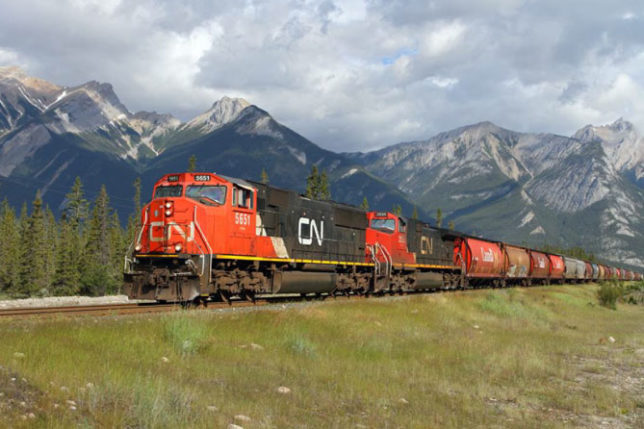The 2015 crop is smaller than in previous years and there could be up to 5.5 million tonnes less wheat exported than in 2014. Five and a half million tonnes fewer exports divided by 100 tonne railcars is a lot less railcars that will be needed over the course of the year.
“You get a different definition of adequate railcar allocation depending who in the supply chain you talk to,” says Craig Toews, manager of logistics and transportation for Louis Dreyfus Commodities Canada. “There will be ample railcar allocation to move the crop by the end of the crop year. It is a smaller carry out and smaller crop than the past couple years. Adequate railcar allocation to move it when farmers and shippers require, however, is extremely unlikely. The issue is the same issue that has occurred year after year for many decades, that is the conflicting supply chain priorities when it comes to how and when to transport the crop.”
Historically speaking, the railways rarely supply enough power and labour to move the crop in the harvest to November time period, despite there being adequate demand for the crop.
“Railways would incur much higher costs taking on more cars or locomotives and hiring additional crews in order to gear up to the capacity required to meet all grain shippers demand all the time, in turn moving the majority of the crop in just a few months, then have assets idle for the remainder of the year,” adds Toews.
Railways do ramp up their capacity for harvest; however, they do not gear up to maximum capacity to move the entire crop in just a few months. Toews mentions that it is much more cost effective for them to utilize a smaller capacity year round, often this strategy has been called “sweating the assets.” So, yes, there will be adequate capacity to move the grain over the crop year; however, timely demand-driven movement will continue to be an issue – no different than every other year.
“It helps that the industry has now dealt with all the logistical issues of the record crop and has experienced several years since deregulation of the Canadian Wheat Board. A lot of lessons have been learned the past few years,” suggests Toews.
An additional factor, which may impact overall rail service, is the situation with oil and gas. Crude oil was $90 per barrel a year ago, now it’s $50 a barrel or even less. Will they allocate and deliver 5,500 cars per week, which was last year’s goal? Or will they manage their allocation to a much smaller crop?
“Last year both railways were forecasting steady growth in petroleum carload volumes, that was when oil was twice the price per barrel it is today,” says Toews. “For the Canadian railways, 2015 year to date their petroleum railcar volumes are down about 4 percent versus the same period last year. The railways will have planned for increased volumes and increased their capacity accordingly, with it taking at minimum several months for them to gear up. The increased capacity will now be underutilized with the lower oil volumes they are experiencing, thus freeing up capacity on their lines for other carload types. That being said, petroleum products account for about 6 percent of Canadian rail volumes. Will this freed up capacity solve the grain transportation bottleneck that happens every year at harvest time? Unlikely, but it could help the situation.”
The grain elevator system will be more competitive in trying to attract a smaller crop this year. With less grain to handle, they will have to work harder to handle it. Farmers and grain companies need to capitalize and move the crop when there is demand to sell grain and the crop supply to move it. This results in high demand for railcars at harvest time and the subsequent peak period months.
Last year the government amended the Canada Grain Act to require grain companies to include penalty provisions in contracts with producers, for when they cannot take the producer’s grain in the agreed upon delivery period. These provisions would encourage grain companies to be more calculated in signing up grain in the periods they are certain they can move it for this crop year.
So, how can a farmer position himself to not be disadvantaged by any possible rail movement issues this winter? Growers should be familiar with the various seasonal movement trends for the commodities they produce.
“As for farmers,” says Toews, “they know their business best; they should plan well in advance and know their transportation, storage, and marketing requirements. If they have a minimum amount of grain that needs to move during harvest time, take advantage of opportunities in advance and know the risks associated if they choose to wait. They should be well aware of and keep close tabs on all outlets available to them including, as an example, trucking their grain across the border or selling into the expanding canola crushing industry in Canada.”
A balanced approach to marketing is so important: understanding the fundamental and technical aspects of it, as well as the transportation aspects. Take advantage of any premiums and don’t panic when the market is busy talking itself down.







Leave A Comment